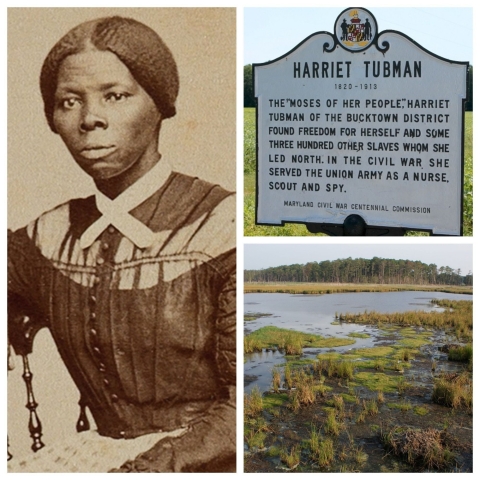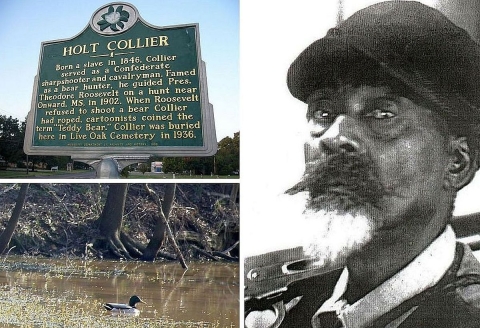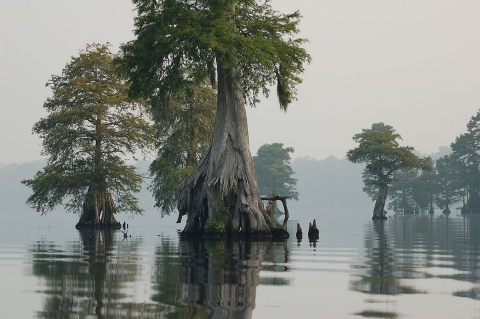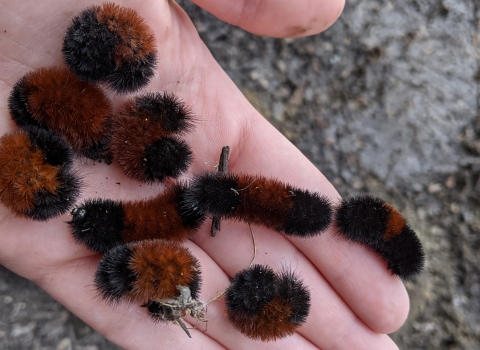National wildlife refuges help conserve our nation’s history as well as our natural heritage.
Consider these stops on a refuge-based African American history tour:
- The site of a historic settlement at Great Dismal Swamp National Wildlife Refuge in Virginia where, for generations, people who escaped from slavery defied bounty hunters
- The birthplace of the intrepid Harriet Tubman at what is now Blackwater National Wildlife Refuge in Maryland. After escaping slavery, she returned to the area several times to lead dozens to freedom
- One of the best-protected Gullah communities at Waccamaw National Wildlife Refuge in South Carolina
- Bombay Hook National Wildlife Refuge in Delaware, where an all African American CCC (Civilian Conservation Corps) crew worked
- Holt Collier National Wildlife Refuge in Mississippi, named for the African American Civil War veteran who was President Theodore Roosevelt’s guide during the president’s bear hunts of 1902 and 1907.
At Great Dismal Swamp Refuge, archeologists are studying the sites of a settlement occupied for two centuries by once-enslaved African Americans and their descendants. You can’t reach the remote dig sites. But you can take a boardwalk trail to a pavilion with interpretive panels telling how runaways survived the swamp’s heat and venomous snakes. In 2004 the refuge was named part of the National Park Service’s Underground Railroad Network to Freedom because the swamp offered some a treacherous escape from slavery.
Abolitionist Harriet Tubman spent her childhood doing forced labor on farms on or near Blackwater Refuge. After she escaped slavery, her knowledge of the area’s woodlands and swamps helped her lead others to freedom. Blackwater Refuge protects much of the landscape that formed Tubman’s early experience and is a stop on the Harriet Tubman Underground Railroad Byway. The Harriet Tubman Underground Railroad State Park is across the street from the refuge. In 2021 archaeologists found the site of the Tubman family cabin on land that Blackwater Refuge acquired the previous year.
At Waccamaw Refuge, you can learn about the Gullah community along the refuge boundary on Sandy Island, where freed African Americans and their descendants were deeded land after the Civil War. Gullahs, Creole people of West African ancestry, produced rice in what was one of the first African American-owned businesses in South Carolina. Islanders still schedule their lives by the tide. They commute to work by private boat.
At Bombay Hook Refuge, you can see the marshes off Bombay Hook Island where those fleeing slavery reportedly hid to board boats for New Jersey and freedom. You can also hear about a rebellion at the Whitehall Plantation — on what is now refuge land — fueled by people enslaved at Whitehall. And you can see a typical menu for that CCC crew, whose most important job was mosquito control.
At Holt Collier Refuge, you can learn about the refuge’s namesake: a man born into slavery who became a soldier for the Confederacy, a Texas cowboy and a hunter who felled more than 3,000 bears — more than the number killed by Daniel Boone and Davy Crockett combined. Collier was the African American guide who led President Theodore Roosevelt on the 1902 Mississippi hunting trip in which the president refused to shoot a bear. The incident inspired a toymaker to create the popular "teddy" bear.






